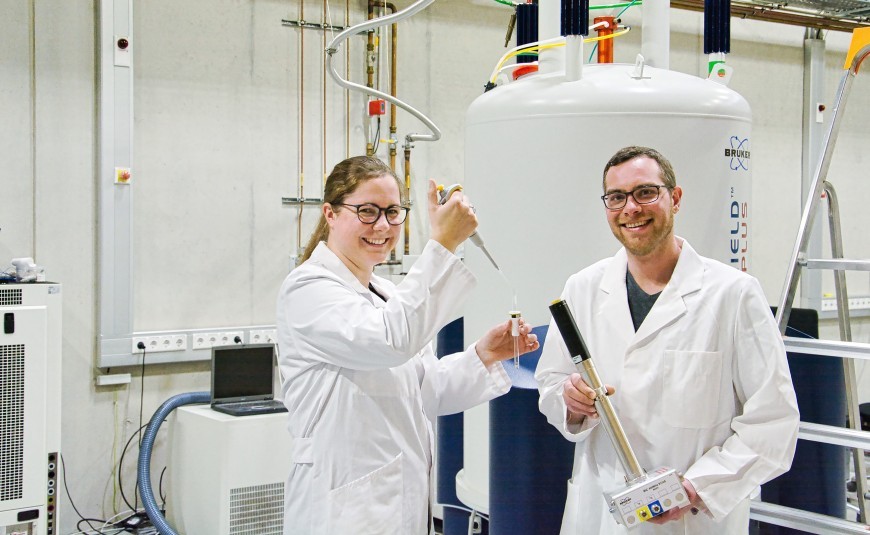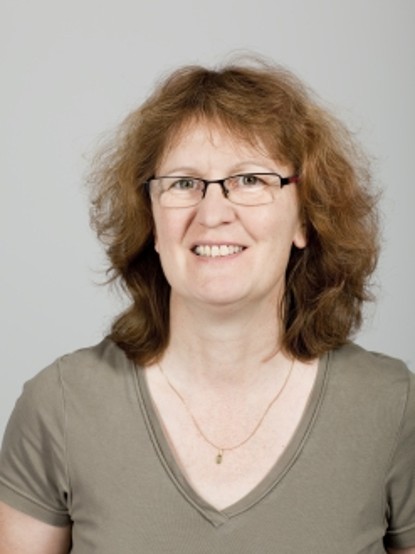On the trail of concentration gradients
Team at TU Darmstadt uses Raman and NMR spectroscopy for measurements
2022/04/12
How do substances in liquid mixtures behave during evaporation and how can evaporation processes be better controlled? A team at TU Darmstadt has made an important contribution to clarify these questions: The scientists have succeeded for the first time in contactlessly detecting different concentrations in mixtures. The results have been published in the renowned journal “Proceedings of the National Academy of Sciences” (PNAS).

The evaporation of droplets from liquid mixtures plays an important role in many technical applications. For expample, when we paint a wall or print on paper, the liquid components of the paint must evaporate, while the solid pigments stick to the wall or the paper. In order to better control such processes, liquid mixtures are often applied, in which case the single liquids evaporate at different rates. The mixing ratio after applying the drops therefore changes over time due to evaporation. These transport processes create concentration gradients which hitherto were hard to detect.
The problem: A measurement of the concentration during evaporation was not possible without influencing the process by the technique itself or by tracer particles. Researchers of the CRC 1194 did it another way: They succeeded for the first time in detecting these concentration gradients contactless by using spatially resolved nuclear magnetic resonance (NMR) and Raman spectroscopy.
Since the measurements are contact-free and no chemical marker substances have to be added, the evaporation behavior could be studied largely without interference from the measurement process.
Important contribution to fundamental research
In their recently published PNAS paper, Alena Bell, Jonas Kind and co-workers from the materials science and chemistry departments showed how a concentration gradient forms inside the droplet which changes over time during evaporation.
The two spatially resolved spectroscopy methods successfully used here provide two independent tools for measuring concentration changes in liquids, such as those caused by evaporation and transport processes.
The results are an important contribution to fundamental research. Practically, they could once be applied to general measurements of chemically similar substances or, for example, to “lab-on-a-chip” applications in medicine.
The publication in PNAS is the result of the cooperation of five projects within the Collaborative Research Center 1194 “Interaction of Transport and Wetting Processes”. Four of these projects are located at TU Darmstadt, one project was localized at the Max Planck Institute for Polymer Research in Mainz and is now at the Leibniz Institute for Polymer Research in Dresden. The Collaborative Research Center has been funded by the German Research Foundation since 2016.
The publication
Alena K. Bell, Jonas Kind, Maximilian Hartmann, Benjamin Kresse, Mark V. Höfler, Benedikt B. Straub, Günter K. Auernhammer, Michael Vogel, Christina M. Thiele, Robert W. Stark: Concentration gradients in evaporating binary droplets probed by spatially resolved Raman and NMR spectroscopy, in: PNAS Vol. 119, No. 15 (2022).

